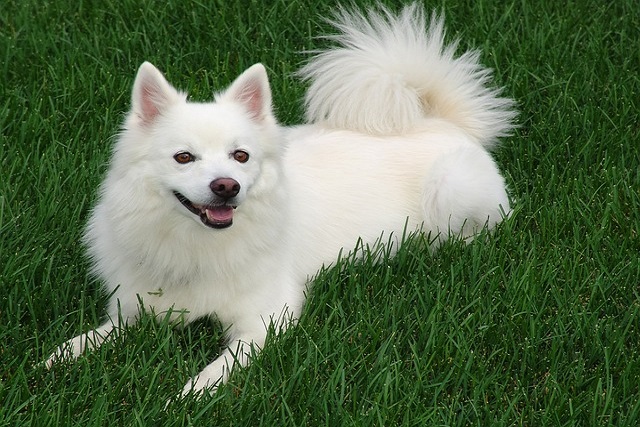
How do i train my dog to be obedient?
Watching your dog dart across the park ignoring your calls isn’t just frustrating—it can put them at risk near busy streets or public spaces.
We often see dogs walking with their owners on the park paths in the dim morning or on the streets and alleys at sunset. This scene should have been harmonious and beautiful, but sometimes it becomes less pleasant due to the dog pulling the leash. Pulling and pulling a leash by a dog not only makes walking difficult, but may also pose a threat to the safety of both the dog and its owner. Therefore, how to prevent dogs from pulling the leash has become a skill that every dog owner needs to master.
Firstly, understanding the reason why dogs pull the leash is the key to solving the problem. The behavior of dogs pulling and tugging on the leash often stems from their instincts and needs. Dogs are naturally curious and have a strong desire to explore their surroundings. When they see other animals, pedestrians, or interesting smells, they unconsciously rush forward. In addition, if dogs do not receive sufficient exercise and stimulation, they may release excess energy by pulling and tugging on the leash. It is also possible that the dog is trying to express dominance or lacks basic obedience training.
To prevent dogs from pulling the leash, owners need to start with training and daily management. Training is the foundation, it can help dogs establish correct behavioral habits. Basic obedience training, such as "sit down", "stay", and "follow me", is an effective way to prevent dogs from pulling the leash. Through these trainings, dogs have learned to remain calm and obedient upon hearing instructions, rather than simply rushing forward. During training, the owner should maintain patience and consistency, using positive reinforcement methods such as rewards and praise to encourage the dog's correct behavior.
In daily management, choosing the appropriate traction rope and collar or chest harness is also very important. For dogs that are easy to pull, traditional collars may increase the risk of neck injuries, so chest straps can be considered. Chest straps can disperse tension, reduce pressure on the dog's neck, and also better control the dog's direction. In addition, some specially designed towing ropes, such as adjustable length towing ropes or towing ropes with buffering functions, can also reduce the impact of pulling to a certain extent.

The techniques of walking should not be ignored. Owners should maintain the appropriate length of the leash, neither making the dog feel restrained nor letting the leash become too loose. During a walk, the owner should maintain a stable pace and rhythm, avoiding sudden acceleration or deceleration, which can confuse the dog and increase the likelihood of pulling. When the dog starts pulling, the owner should immediately stop and wait for the dog to calm down before continuing to move forward. This method requires the owner's persistence and patience, but over time, the dog will gradually learn to maintain an appropriate pace while walking.
Emotionally, preventing the dog from pulling the leash is also an opportunity to deepen the relationship with the dog. Through training and daily interactions, owners can better understand their dogs' needs and behaviors, thereby establishing more stable trust and communication. When a dog shows more cooperation and quietness during a walk, the owner should give full praise and rewards, which can not only enhance the dog's positive behavior, but also make the walk more enjoyable and relaxed.
In addition, owners should also pay attention to the overall well-being of their dogs, ensuring that they receive sufficient exercise and stimulation. Regularly taking dogs for outdoor activities such as running, playing, or participating in dog social activities can help them expend excess energy and reduce the urge to pull or tug on the leash. At the same time, providing a variety of toys and intellectual games can also keep dogs active and satisfied at home.
Finally, preventing dogs from pulling the leash is not only a correction of their behavior, but also a reflection of their owner's sense of responsibility. As the guide and protector of dogs, owners have the responsibility to ensure the safety and happiness of their dogs. Through patient training, appropriate management, and loving interactions, we can help dogs overcome the habit of pulling and tugging on their leash, making every walk a pleasant journey.
By understanding the behavior of dogs, conducting effective training, choosing appropriate equipment, and paying attention to their overall well-being, we can enjoy the pleasure of walking together with dogs and establish a deeper emotional bond. During this process, every successful walk is a recognition of the joint efforts of the owner and the dog, as well as a beautiful sublimation of their relationship.

Watching your dog dart across the park ignoring your calls isn’t just frustrating—it can put them at risk near busy streets or public spaces.

New puppy owners often find themselves rushing to clean up accidents before they set in, and that’s where puppy pad training becomes a game-changer.

If you've noticed your dog's waistline disappearing and your veterinarian has mentioned those few extra pounds, your first instinct might be to simply reduce the amount of food in their bowl.

Training a dog to use a designated spot indoors isn’t as daunting as many new owners fear, but it does take consistency and an understanding of your pet’s needs.

That moment of dread on a walk is all too familiar for many new dog owners. You see another dog approaching down the sidewalk of your neighborhood

If the sight of another dog on your neighborhood walk makes your heart sink as your own dog erupts into a frenzy of barking and lunging, you're not alone.